What I learnt driving 22,000 kilometres around Australia as a solo woman
A remote tidal waterfall, a pod of orcas ... Julia Salnicki’s solo nine-month adventure was unforgettable.
By Sue Williams
It was a choppy day out on the water and it wasn’t long before most of the small boat’s passengers were doubled up and groaning in misery.
One passenger, however, had wisely taken seasickness pills an hour before boarding at Bremer Bay on a remote spot of Western Australia’s south coast and, staring out to sea, was the first to spot their visitors.
“Look!” Julia Salnicki shouted, pointing into the distance. “There they are!”
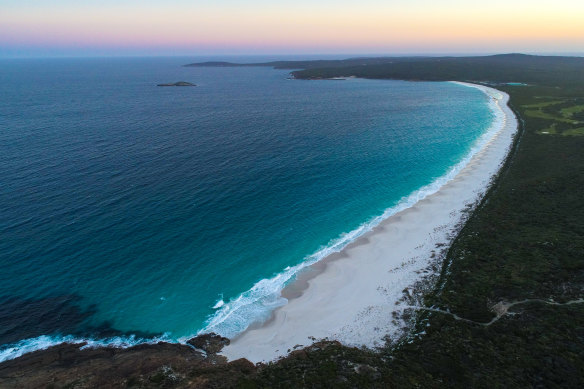
Choppy waters: the beautiful Bremer Bay coastline.Credit: Tourism Western Australia
Everyone looked up, momentarily distracted from their wretchedness. And there, straight in front, was one of the most amazing sights in the world: a pod of 10 orcas, or killer whales, swimming right across their bow.
“It was just incredible,” whispers Julia, lost in awe at the memory of the event, as she struck almost the half-way point of her nine-month-long solo motorhome tour of Australia. “It was the most astonishing thing I’ve ever seen.
“There are only a handful of places in the world where you can see orcas in the wild and Australia has one of them. It’s something I’ll never forget.”
But it wasn’t as if such magical moments were rare during Julia’s trip. She’d had little idea, when she set off on February 1, 2023, what she’d be in for. But the sights, the sounds, the experiences, the friendships she made on the road and the delirious sense of freedom as she drove 22,000 kilometres around Australia, were thrills that far exceeded her expectations.
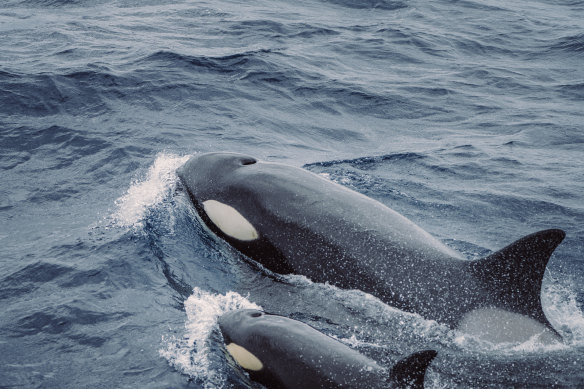
Spotted: a pod of orcas provides a thrilling distraction.Credit: Tourism Western Australia
“We live in one of the most stunning countries on earth,” she says now, settling back into her home on NSW’s Lake Macquarie, but already planning her next – albeit shorter – foray. “But you should go out and see it while you’re still fit enough to do all the fun things like going out to see orcas, climbing hills for the views, kayaking and sitting out at night around a campfire, admiring the stars. Don’t leave it too late.”
Julia’s great adventure started off as a vague stirring in her soul. As a wildlife researcher, travel industry guide and then retail specialist, she’s spent her whole life working, and huge chunks living and working overseas, but she’d barely seen Australia.
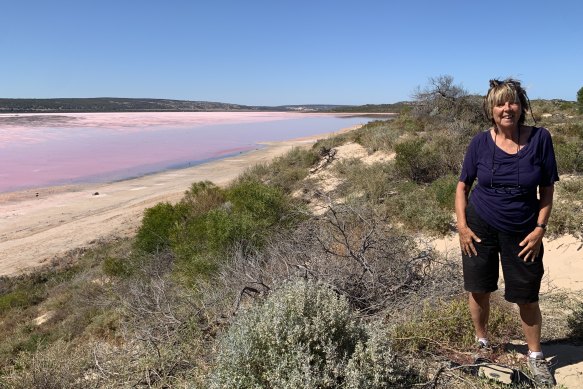
Julia Salnicki at Hutt Lagoon’s Pink Lake, Western Australia.Credit: Julia Salnicki
The more she thought about it, the more the longing to take time out from her career and head out seized her. Even the fact that she was a single woman who’d be travelling alone did nothing to deter her – the data showed her that, at any one time, there could be up to 12,000 women travelling solo around the country, so she knew she’d be in good company.
So, one day, after doing all her research, she bought a second-hand 2017 Mercedes Sprinter with 240,000 kilometre mileage for $76,000 on-road. It was already fitted out with two single beds that could be converted to a queen, a shower and a toilet, and the ability to walk from the front to the back inside, without the need to exit the vehicle first. To that, she added another $5000 worth of equipment, including an awning and solar blanket, and dubbed it Harvee (RV – recreational vehicle – geddit?).
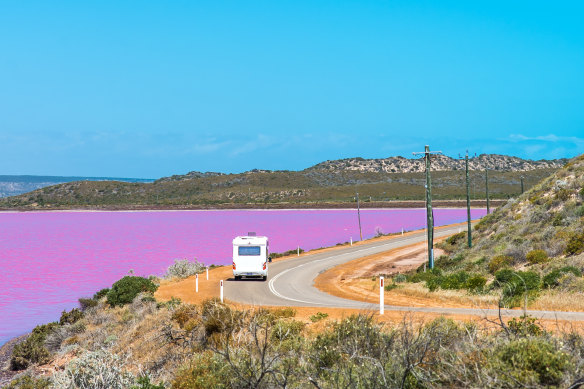
Hire before you buy, to see what will suit you. Pictured: WA’s bubblegum-hued Hutt Lagoon.Credit: iStock
Next, she drew up a route, with expected dates, on an Excel spreadsheet and shared it with friends in case any fancied dropping in at various stages for the ride. And then she set off.
From Lake Macquarie, Julia, in her 60s, followed the coastline in a clockwise direction, with occasional jaunts inland to see the sights, down through NSW, Victoria and South Australia and then up through Western Australia, the Northern Territory, across to Queensland and finally back south to the Central Coast. She slept in the van every night on campsites, with only the occasional night at the home of friends she visited along the way.
Her pick of NSW was the coastal town of Tathra on the Sapphire Coast, with its historic timber wharf stretching into the ocean, stunning views, colonies of fur seals, fairy penguins and dolphins, the beautiful countryside still recovering from the devastating 2018 bushfires, a splendid campsite and warm raspberry muffins.
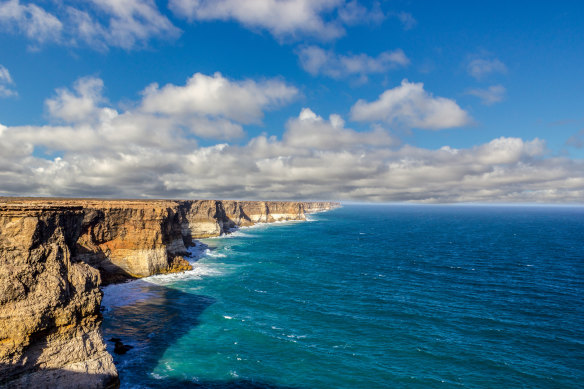
“Absolutely beautiful”: the Bunda Cliffs at the edge of Australia.Credit: iStock
In Victoria, she loved Raymond Island, a three-minute ferry ride from Paynesville, about 300 kilometres east of Melbourne, with its paths among the gumtrees which held more than 200 koalas. She also absolutely adored the Clarksdale Bird Sanctuary, about two hours west of Melbourne, and home to over 150 species of woodland and wetland birds among the native forests. “It’s a place that most birders don’t even know about,” she says.
South Australia’s highlights included the Umpherston Sinkhole at Mount Gambier, a massive sunken garden that formed when the top of a limestone chamber collapsed in the middle of the city. Now, there are views from above, and a walk to its depths past all the now verdant hanging gardens. The Quorn Silo Light Show was a thrill too, the free starlit celebration of the Flinders Ranges via a series of giant colourful projections.
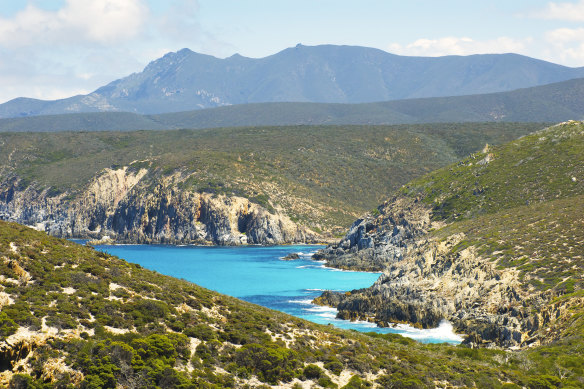
Wonders at every turn and spectrums of blue at Quoin Head in Fitzgerald River National Park.Credit: Tourism Western Australia
Then there was driving through the Nullarbor, the stretch of semi-arid plains dotted with bluebush, mulga scrub and wildflowers. “Some people say there’s nothing to see there but that’s wrong; there’s always something different to look at,” says Julia. “And then you see a little sign to turn off for the Head of Bight and suddenly you see magnificent views down to the blue waters and the 13 cliffs jutting out in the distance. It’s absolutely beautiful.”
Western Australia, she found mesmerising. Apart from Bremer Bay and its orcas, another favourite spot was Fitzgerald River National Park just to its north, where the sight of tiny pygmy possums – no bigger than a mouse – feeding on the nectar of the banksias left her speechless with wonder.
In direct contrast was Port Hedland on the west coast in the Pilbara, the world’s biggest bulk minerals expert port, where she toured all the ships on the harbour in a launch operated by the local Seafarers Mission. There was also the town of Onslow with its proud ANZAC memorial where the sun rises from the ocean right in the middle of the structure.
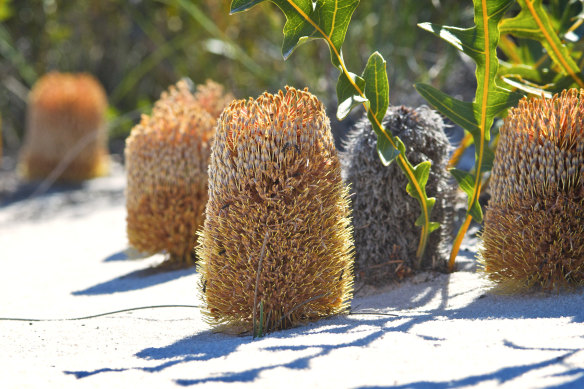
Colourful creeping Banksia in Fitzgerald River National Park.Credit: Tourism Western Australia
Further north, on the Dampier Peninsula, Julia visited the remote Cygnet Bay where, from a small amphibious craft, she witnessed a cascading waterfall off a lonely reef as the tide receded, leaving water pouring from its surface and hundreds of fish, birds and crustacea on display as the water drained away.
“That was so amazing,” she says. “It was a beautiful thing to see. It’s like the Montgomery Reef and Horizontal Falls tour in the Kimberley, but instead of costing $2000 to see, it was only $200.”
Finally, the Queensland highlight was the Atherton Tablelands for its lovely scenery, its huge variety of birds and its panoply of platypuses.
“The whole trip was wonderful, and I never encountered any major problems,” Julia says of her tour, which she reckons cost her around $20,000 for almost a year on the road, although she didn’t include food costs as she’d pay those at home.
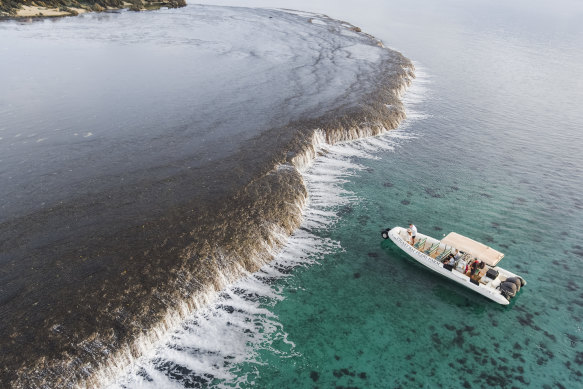
Cygnet Bay’s thrilling tidal waterfalls.Credit: Tourism Western Australia
“All the locals I met were so happy to see people travelling around Australia again after COVID and I met people along the way I know will be lifelong friends. I couldn’t recommend doing this more highly. And it certainly won’t be my last!”
Tips for the Great Aussie Road Trip
By Julia Salnicki
- Hire a vehicle before you buy to see what will suit you, and when you buy, take it out for a few weeks first to get used to it.
- Do your research to work out where you want to go before you leave – but always factor time in for spontaneity. People you meet tell you about great places you might never have heard of before.
- On your itinerary, check distances between places as there can be few fuel stations in more remote parts of Australia.
- Book campsites ahead if you’re travelling during school holidays, or steer away from the coast at those times.
- Keep a diary because otherwise you’ll never remember all the things you see and do.
- Try to do part of the trip with friends if you’re travelling alone. It can be a nice contrast.
- Factor in extra time for seeing nature which doesn’t keep to the same timetable, and always be open to change. For instance, the whale sharks of Coral Bay had gone to Exmouth when I visited.
- Make use of handy websites, including the Bible of places to stay WikiCamps Australia (wikicamps.com.au) and, if you’re a woman travelling alone, the Facebook page Women Caravanning, Camping and Travelling Solo Australia.
- Join your vehicle’s owners’ club – it’s so handy to be able to ask them for tips on how, for example, to set up mosquito netting on doors and windows.
- Do it sooner rather than later. There’s nothing worse than reaching a fabulous spot and not having the strength, energy or mobility to explore it properly.
Sign up for the Traveller Deals newsletter
Get exclusive travel deals delivered straight to your inbox. Sign up now.